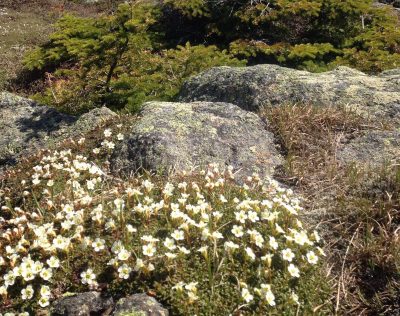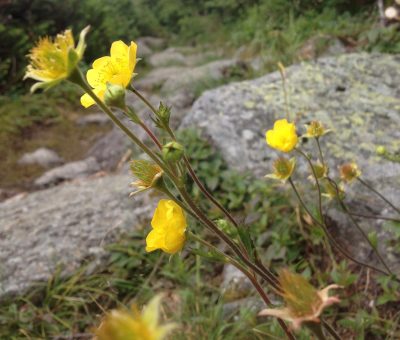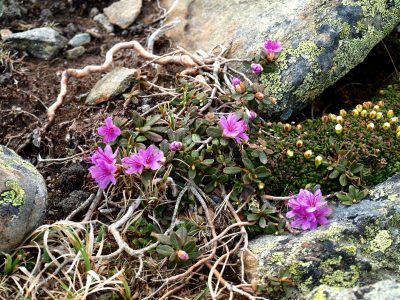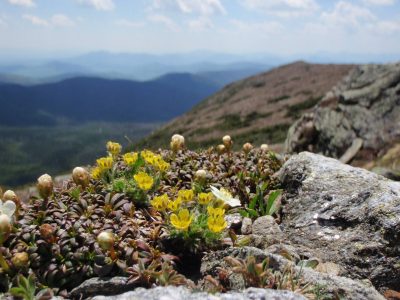
When I first started venturing into the alpine zone, the obvious captivated me. The absence of large trees, the swaths of exposed rock, the strength of the wind, the view (or lack of one) around me, and the perspective that came with it kept me coming back for more.
Everything in those environments seems big and expansive. But, every time I came back, the closer I looked, and the more I found. And, the colorful alpine flowers that dot the summits exemplify nature’s beauty and resiliency in such a harsh environment.
Alpine Adaptations
It is no easy feat to come back every spring after a winter of heavy snow, arctic temperatures, and hurricane-force winds. However, plants growing in an alpine ecosystem have adapted over time to survive.
For instance, growing close together in clumps or mats helps the plant retain heat and allows wind to pass over with minimal disturbance. As well, growing low to the ground protects the plant from deep, wind-packed snow. Some also have thick, wax-coated leaves, which retain water in shallow soils and aid in protecting the plant from high winds.
How to Spot Them
When you search for wildflowers, make sure to be environmentally conscious. Though these plants have evolved to withstand extreme conditions, they are fragile to human contact. So, when looking for these flowers, stay on the trail to avoid trampling other alpine plants and take only pictures.
If you are headed into the alpine zone, generally above 4,000 feet, you will be able to find many of these species. In New Hampshire, for instance, these flowers can be found in the Presidential Range, Franconia Ridge, Mount Chocorua, Mount Cardigan, Mount Monadnock, and on bald summits.
Over in Maine, they can be found in Baxter State Park, the Bigelow Range, the Mahoosuc Range, Sugarloaf Mountain, and Mount Abraham. When you’re in Vermont, alpine zones exist on Mount Mansfield and Camel’s Hump. As you venture into New York, you can find them on Whiteface Mountain, Algonquin, and Mount Marcy.
Alpine Flower Guide





Patrick Scanlan
Patrick is a part-time guide with the EMS Climbing School and a lifelong explorer of the forests and peaks of the White Mountains. Previously, he has worked in the High Huts of the Appalachian Mountain Club and he lived for 2 years in Tuckerman Ravine as the Caretaker of Hermit Lake Shelters. He has been involved with professional and volunteer rescue with the AMC and Androscoggin Valley SAR in Tuckerman and Huntington Ravine and the greater Presidential Range. Currently, Patrick is the program director for a backcountry skiing team of high school shredders at Carrabassett Valley Ski Academy at Sugarloaf, Maine. He is currently an American Mountain Guides Association(AMGA) Apprentice Ski Guide and Apprentice Rock Guide.
Related Posts
April 2, 2024
10 Tips for Mountain Biking Etiquette During Mud Season
One rough spring could ruin the…




